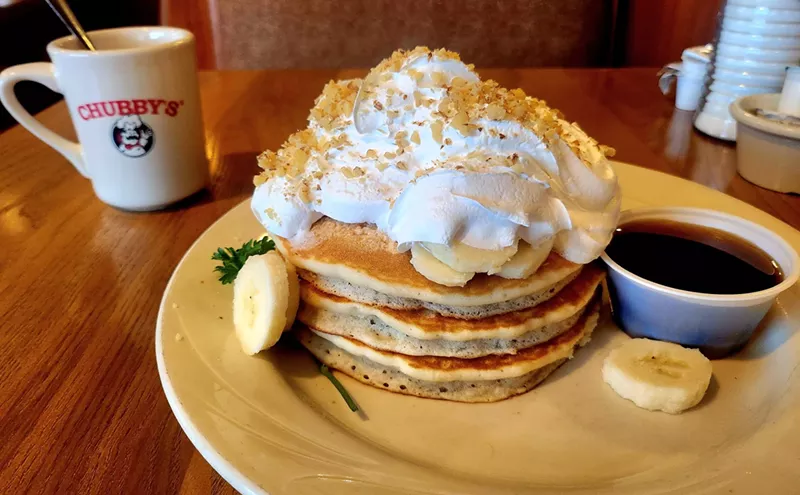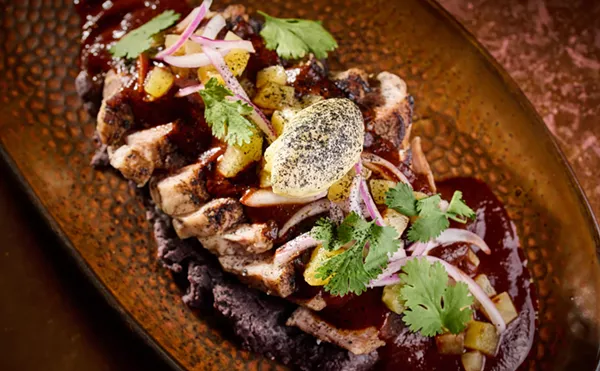Toasted monkey or [expletive deleted]?
These are the two prevailing definitions for the origin of the term chimichanga, that ever-popular fried burrito that has become a staple at Tex-Mex establishments.
The more colorful self-censorship theory comes to us courtesy of Nora Burba Trulsson, author of "Chimichanga Mysteries...", an influential Sunset Magazine article detailing the dish's main origin theory. Her primary source was Carlotta Flores, owner of Tucson's El Charro Café, who recounted a family legend in which Flores's great-aunt, Monica Flin, was flipping burros (as burritos are often called in Arizona) in the kitchen one day when one accidentally dropped into the deep-fat fryer.
Rather than curse in front of her ever-present gaggle of nieces and nephews, she instead exclaimed, "Chimichanga!, " an idiomatic expression usually defined as "whatchamacallit" or "thingamajig". All of us who have tried to curb our occasionally salty language in front of small children can readily relate.
Still another theory gives creation honors to George Jacob, owner of Club 21 Restaurant, who had a customer one day who thought his burrito looked undercooked. So Jacob obligingly fried it. All theories, however, list Tucson as the birthplace of chimichangas. Therefore the dish is not truly Tex-Mex. Robb Walsh, author of The Tex-Mex Cookbook, barely mentions them at all, merely repeating the El Charro story in abbreviated form. Still, the prevalence of chimis and other non-Tex-Mex dishes in Tex-Mex establishments warrant their inclusion in this series.
In our fair city, you would have quite a difficult time locating a more beautiful spot from which to enjoy your chimichangas than Angelinas Mexican Restaurant in The Colony overlooking scenic Lake Lewisville and boasting not one but two separate patios. Angelina's chimichangas are filled with tender chunks of marinated fajita beef, then golden fried and topped with ranchero sauce. However, I've learned over the years to pay heed to the words of wise waiters, and when mine suggested that I triy substituting queso for ranchero, I was quick to oblige.
Simultaneously crunchy and chewy, and altogether satisfying, Angelina's chimis may well have you shouting your own idiomatic expression.












